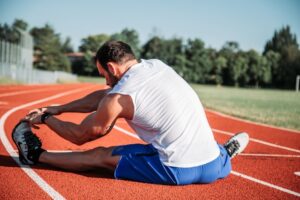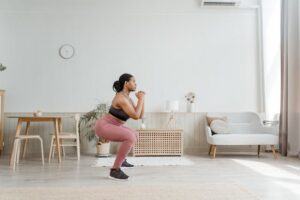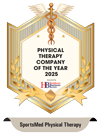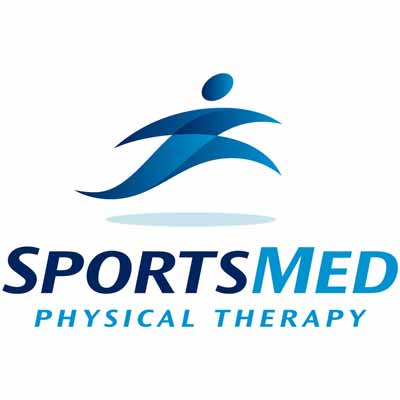When it comes to stretching, it’s easy to get confused. What is the best type of stretching – static or dynamic stretching? When is the best time to stretch? How often do you need to stretch to see results?
While you may have heard conflicting recommendations, the good news is that there are safe, effective, evidence-based strategies for stretching that are easy to follow.
Importance of Flexibility in Fitness
It’s common to ignore flexibility when it comes to fitness. But here are four reasons why you should prioritize flexibility in your fitness routine.
Enhanced Performance
Moving freely and comfortably through an unrestricted range of motion can make all the difference in achieving your sports or personal fitness goals. By improving your flexibility, you can move more smoothly and efficiently during various physical activities, from lifting weights to performing agility drills.
Reduced Risk of Injury
One of the most important reasons to prioritize flexibility is because it can help you prevent injury. Tight muscles and restricted joints can impede movement, leading to overcompensations.
With regular stretching and mobility exercises, your body can handle sudden movements or impacts better, reducing your chance of injury.
Faster Muscle Recovery
After an intense workout session, your muscles may feel tight and tired. Flexibility training helps support blood circulation and nutrient delivery to your muscles, promoting faster recovery.
Stress Relief and Relaxation
Flexibility exercises, such as yoga and stretching, offer a dual benefit by improving physical flexibility and promoting relaxation and stress relief.
As you flow through gentle movements and deep breathing exercises, you’ll activate the body’s relaxation response, leaving you feeling better than when you started.
Benefits of Dynamic Stretching
Dynamic stretches involve moving your body through a full range of motion. Rather than holding a position or stretch, the goal of dynamic stretching is to move repetitively and fluidly.
Dynamic stretching comes with some incredible benefits:
Improves Blood Flow
Dynamic stretches like leg swings or arm circles improve your blood flow. This is because moving your muscles helps pump blood around your body more efficiently. As a result, your muscles get more oxygen and nutrients, which allows them to work better during exercise.
Unlock Your Joints
Dynamic stretches unlock your joints, gently increasing their range of motion.
This lets you move more freely and gracefully, whether dominating the dance floor or crushing your personal bests.
Muscle Activation
Dynamic stretches prime your muscles for action, improving communication between your nervous system and muscles.
This translates to smoother, more powerful movements, bringing out your full potential during your workout.

Benefits of Static Stretching
Static stretching involves holding a stretch in a fixed position for a while, typically without moving. It’s the stretching you do when you touch your toes and maintain the position for approximately 30 seconds.
Static stretching can be beneficial in several ways, such as:
Muscle Flexibility
Static stretching can help increase muscle flexibility. This means you can move more freely and with less resistance, which can improve your overall range of motion.
Stress Relief and Relaxation
Another benefit of static stretching is stress relief and relaxation. Holding a stretch for a few seconds can help relax your muscles and calm your mind.
This can be especially helpful after a long day or a challenging workout, helping you unwind and destress.
Prevents Injury
Static stretching helps with injury prevention. Regularly stretching your muscles and improving flexibility can reduce the risk of injuries such as strains and sprains.
This is important if you are an athlete and engaged in physical activity, as injuries can sideline progress and lead to downtime.
When to Choose Dynamic Stretching
You should choose dynamic stretching in two main situations:
1. As Part of a Warm-up Routine
Dynamic stretches help to gradually increase your heart rate, blood flow, and muscle temperature. This prepares your body for physical activity. Also, it helps to improve your performance and reduce your risk of injury.
A 2021 study found that dynamic stretching as part of a warm-up routine improved performance in a vertical jump test compared to static stretching.
The study found that dynamic stretching increased jump height by an average of 2%, while static stretching decreased jump height by 2%.
This means that using dynamic stretching when warming up can result in an average increase in jump height of 2%, which positively affects your performance.
Conversely, static stretching led to a decrease in jump height by 2%.
2. Before Explosive Activities
Explosive activities include:
- sprinting
- jumping
- throwing, etc.
Dynamic stretches activate the muscles and prepare them for the demands of explosive activity. This can help to improve your power, speed, and agility.
High knees, butt kicks, and lunges are all good examples of dynamic stretches that can help to prepare your legs for sprinting or jumping.
When to Choose Static Stretching
Static stretching, where you hold a position for 30-60 seconds, can be beneficial in two ways:
1. As Part of Your Cool-down Routine
Static stretches can help to improve flexibility and reduce muscle soreness. While its effectiveness in reducing soreness varies, many people find it helps.
A combination of static and dynamic stretching after resistance training can help to reduce muscle soreness by up to 10% compared to no stretching.
Additionally, static stretches can help your body gradually return to a resting state after the physical stress of exercise.
2. To Improve Flexibility and Motion Range
Regularly incorporating static stretches into your routine can help to lengthen your muscles and increase your range of motion. This can be great for activities like yoga, dancing, and even everyday tasks.
But don’t stretch if you’re in pain. Avoid ballistic stretching, which can increase your risk of injury, and consult a healthcare professional if you have any concerns about stretching.
How to Combine Dynamic and Static Stretching
Combine dynamic and static stretches using the directions below for a well-rounded stretch.
Warm Up With Dynamic Stretches
Get your blood flowing and muscles primed with 10-15 repetitions of dynamic stretches like leg swings, arm circles, and high knees.
Cool Off Static Stretches
After your workout or activity, hold static stretches for 30-60 seconds each, targeting major muscle groups. Focus on:
- hamstrings
- quads
- calves
- chest
- back
- shoulders
Examples of a Dynamic Stretching Routine
- 20 bodyweight squats: Keep a steady pace, imagine you are sitting back into a chair, bending your hips and knees. Look forward to help keep your core engaged and torso upright; you can reach your arms in front of you for a counterbalance if needed.

- 10 alternating reverse lunges with arm reach: Step back with one foot, bending both knees and aiming your back knee toward the ground. Simultaneously, reach the same side arm as your back leg up and over your head toward the opposite side.
- 10 forward leg swings (each leg): Balancing on one leg, kick your non-standing leg in front of you, aiming to get your knee fairly straight. If this is too difficult, bend that front knee. Try to go as high as you can on the way up, but don’t worry if you can’t go too high. You want to make sure you’re feeling the stretch in the back of the leg. Use a chair or a wall for balance.
- 10 side leg swings (each leg): Try to stand upright during this one. Lift one leg out to the side, then back in front of you and across your body. It will be tricky if you’ve never done them, so use a chair or a wall for balance.
- 10 push-ups to downward facing dog: Begin in a plank position, with your arms straight and hands under your shoulders. Perform a push-up, angling your elbows 45 degrees away from your body (not all the way out to the sides). If needed, perform the push-ups on your knees. From the plank position, keep your arms straight while lifting your hips up and pressing your heels toward the floor. Bend your knees if you need to here. Like everything else, this is all about your fitness level. Scale the count up or down to accommodate your comfort.
Work With a Physical Therapist at SportsMed PT
Getting the best approach for your fitness needs and goals requires expert guidance. SportsMed PT’s team of certified professionals provides personalized assessments, stretching routines, and ongoing support to help you.
Don’t leave your health to chance. Schedule a consultation with SportsMed PT today.





